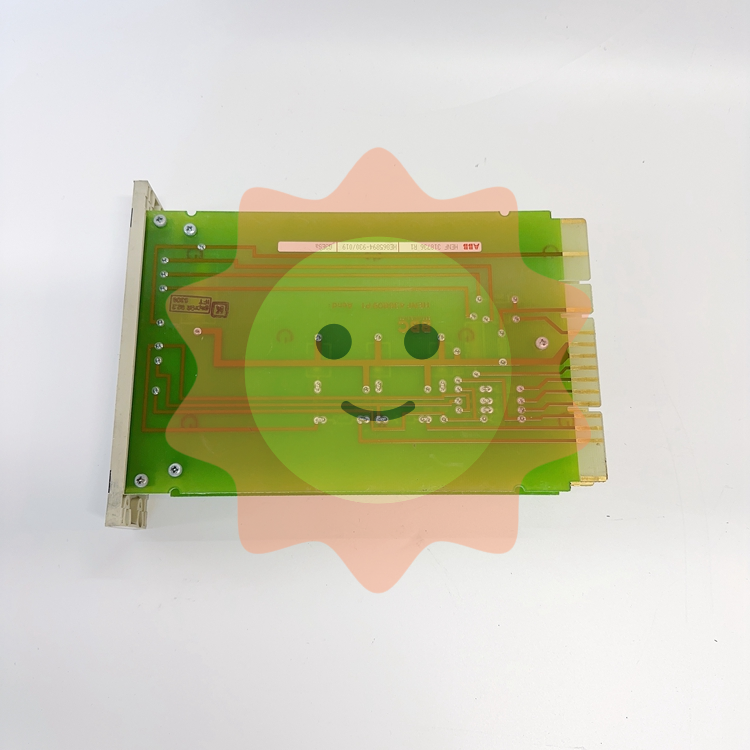Present situation and trend of ethical governance in life sciences
1. General situation of ethical governance in the field of life sciences
For every breakthrough technology in the life sciences, For example, the first successful isolation and in vitro culture of human embryonic stem cells in 1998, the birth of the first "synthetic life cell" in 2010, the first application of CRISPR gene editing technology in human embryo editing in 2015, and the successful pig kidney transplantation test in human beings in 2021, etc. All these have aroused people's widespread concern about relevant ethical and social issues, and thus promoted or promoted the construction of ethical governance systems in countries around the world, including the introduction and optimization of relevant laws and regulations, as well as the improvement of relevant ethical review systems. However, in general, there is a time lag in relevant ethical research in the field of life sciences, and the research intensity is far from catching up with the rapid development of scientific research.
The development of new technologies in the field of life sciences is accelerating, and related ethical issues continue to attract attention
From test-tube baby to assisted reproduction, from embryonic stem cells to human cloning, from synthetic biology to gene-edited embryos, every time the field of life science produces breakthrough results and shows great application potential, it will trigger a series of ethical issues based on their different scientific principles and application scenarios.
Take gene editing technology as an example, although the potential scientific value of this technology has been widely recognized, its complex ethical and safety disputes have always been in the hot spot of public opinion. Due to the complexity of the target, the sensitivity of the technology itself, as well as many uncertainties and unexpected effects on health, environment, economy, society and other aspects, the ethical risks that gene editing may cause are multifaceted. With the deepening of gene-editing technology research represented by CRISPR-Cas9, scientists have begun to try to test on human eggs, sperm and even embryos, and the ethical issues of gene-editing technology have become more compelling. In particular, the world's first "gene-edited baby" was born in China in 2018, which aroused wide attention from academia and society at home and abroad, triggered huge disputes over the ethics and regulatory issues of gene editing technology, and pushed the ethical concerns of gene editing to a peak. At the same time, the biosecurity issues that gene editing technology may bring are also attracting attention from all parties. For example, in the 2016 U.S. Intelligence Community Annual Global Threat Assessment Report, gene editing was included in the list of threats to "weapons of mass destruction and proliferation", arguing that this dual-use technology is widely distributed, low cost, and rapidly developing, and any intentional or unintentional misuse could raise national security issues.

In addition to gene-editing technology, cross-species chimera research is progressing rapidly, and ethical issues continue to cause controversy. Due to the extreme lack of global organ transplant resources, by implanting human pluripotent stem cells into the embryos of other animals, "breeding" human organs on the chimera of cross-species chimeras, culture to obtain the needed organs, has become the most attractive technology in the field of regenerative medicine. As early as 2016, Science selected the top 20 technology predictions, human-animal chimera technology is among them. At the end of November 2019, the world's first "pig monkey chimera" was born; In 2021, the world's first "human-monkey chimera" embryo was born, unveiling the "black box" of human embryo development after implantation.
Although cross-species chimera research has great value, it also has great potential ethical risks, among which the most controversial question is the boundary of chimera research. Some scholars believe that germ cells and nerve cells are the ethical boundaries of human-animal chimeras. Countries such as the United States and Spain allow the creation of human-animal chimeras as long as the chimeras are not capable of reproduction and do not develop brains. In view of the research on "human-monkey chimerism", Chinese zoologist Ji Weizhi believes that human-monkey chimerism embryos are by no means human-monkey hybridization - human-monkey chimerism embryos are monkey embryos as human stem cell development environment, and reproductive chimerism does not occur in essence, which is not contrary to ethics. Alfonso Martinez Arias, a Spanish developmental biologist, believes that research with cows and pigs "has more potential and does not risk challenging ethical boundaries" than with monkeys. At the same time, scientists also stressed that the current research only stays in the stage of in vitro experiments, if the human and animal chimera into the body experiment, implanted into the animal, and finally developed into a certain organism, the consequences are unimaginable.
Countries around the world have strengthened their governance systems and reached ethical consensus
Subversive new achievements and new technologies in the field of life science, while bringing human progress, will trigger people's thinking and discussion on potential ethical and security risks that may occur, thus promoting the continuous progress and improvement of ethical governance in the field of life science in the international community.
Figure 1 Ethical hotspots in the field of life sciences and related regulatory measures in some countries and regions
When new technological risks emerge, countries have formulated their own ethical laws and regulations in the field of life sciences based on their own legal systems, historical traditions and religious beliefs. Especially for new technologies that may directly change species, such as stem cells and gene editing, countries around the world have adopted a variety of measures to regulate and prevent related ethical issues, focusing on the management of scientific research involving human embryos, technology application, operational norms, as well as the management, commercialization and import and export of medical products containing genetic modification or synthetic components.
In 1946, the "Nuremberg Code" was born at the Nuremberg military Tribunal in Germany, which clarified 10 standards for doctors to conduct human trials, opening up the standardization of human trials. The UK Human Fertilisation and Embryology Act (1990, amended in 2008) was the world's first regulatory act relating to human embryos. Its revised version allows human and animal "cell fusion" to innovate "hybrid embryo" experiments, which will promote subsequent research and development of stem cell technology. The German Embryo Protection Act (issued in 1991, amended in 2012) strictly prohibits human embryonic stem cell research and cloning; The German Reproductive Medicine Law (Draft) (published in 2000) again emphasizes that the cultivation of embryonic stem cells is not allowed in Germany. Since 2014, Japan has implemented the "Regenerative Medical Safety Assurance Law", which classifies clinical research and treatment using induced pluripotent stem cells and embryonic stem cells as the "first class" with the highest risk and needs to be reviewed by a special committee.
In addition to laws and regulations at the national level, major international organizations have issued various guidelines or management frameworks to help the scientific community reach consensus and self-govern through practical guidance. For example, the Declaration of Helsinki adopted by the International Medical Congress in 1964 stipulated that in human medical research, the consideration of the health of the subjects should take precedence over the interest in scientific research, which laid the foundation for the ethical code of clinical research. In 2016, the Council for International Organizations of Medical Sciences (CIOMS) developed a revised version of the International Code of Ethics for Health-related Research Involving Humans, which aims to guide health research from the perspectives of ethics, medical product development and safety to promote public health; The International Society for Stem Cell Research (ISSCR) released updated Guidelines for Stem Cell Research and Clinical Translation in May 2021, which combines the latest research advances and clinical ethics in the fields of stem cell-based embryonic models, human embryo research, chimera, organoids and gene editing. Some practical suggestions were put forward for scientific supervision of clinical transformation of stem cells. On July 12, 2021, an expert committee of the World Health Organization (WHO) issued the "Governance Framework for Human Genome Editing" and "Human Genome Editing Recommendations", which for the first time put forward global recommendations on human gene editing as a public health tool and demonstrated its safety, effectiveness and ethical issues.

In addition, the international community has also maintained attention to emergencies in the field of life sciences and actively responded to possible risks. The Joint Statement on COVID-19: Ethical Considerations from a Global Perspective issued by UNESCO's International BioEthics Committee (IBC) and the World Commission on the Ethics of Scientific Knowledge and Technology (COMEST) shows that the COVID-19 pandemic is a global pandemic that calls for a global bioethical reflection and response.
2 Current situation of ethical governance in the field of life sciences in China
The research on ethical issues in the field of life science has been paid more and more attention
A number of national and local funds and programs support research on ethical issues, policy and regulation in the life sciences
Since 2006, the National Social Science Foundation has funded more than 60 projects related to ethical issues, regulations and standards research in the field of life sciences, including 5 major projects and 1 key project. The National Key research and Development Program and other science and technology funding projects have set supporting topics to support ethics-related soft science research, such as the 2017 precision medicine research project "Precision medical ethics, policy and regulatory framework research" and the 2018 synthetic biology special project "Synthetic Biology Ethics, policy and regulatory framework research".
2. In recent years, there has been an increasing number of research papers related to life science ethics in China
By August 2021, Chinese scholars have participated in 96 English literature articles on life Science ethics published in the core collection of Web of Science, and a total of 1,290 relevant Chinese papers published on CNKI; The main research institutions include the Institute of Science and Technology Strategy Consulting of the Chinese Academy of Sciences, the Research Center of Science and Technology Ethics of Beijing Academy of Stem Cell and Regenerative Medicine, the Research Center of Bioethics of Huazhong University of Science and Technology, and the School of Philosophy of Fudan University, etc. The main research contents include ethical disputes, ethical reflection, ethical review, and legal regulation related to new technologies, new ideas and new applications in the field of life sciences.
3. All sectors of society constantly call for the ethical issues in the field of life sciences to be faced squarely and ethical supervision to be strengthened
In 2018, the Association of Life Sciences Societies of the China Association for Science and Technology issued a statement firmly opposing scientific research and biotechnology applications that violate the spirit of science and ethics. In May 2019, four Chinese ethicists published a commentary on Nature, calling for the strengthening of the ethical supervision of biomedical research and putting forward six policy suggestions for the reconstruction of China's science and technology ethical governance system. In 2019 and 2021, many representatives of the National Two Sessions stressed the importance of bioethics norms, suggesting that legislation should be strengthened to guide and restrict scientific research activities in the field of life sciences, and increase penalties.
Laws and regulations on ethics have been promulgated, and the regulatory system has kept pace with The Times
1 China gradually attaches importance to ethical supervision in the field of life sciences, and has introduced a number of ethical supervision measures for the application of emerging technologies
Ethical Guidelines for Human Embryonic Stem Cell Research (2003), Ethical Review Measures for Biomedical Research Involving Humans (2016), Regulations on Human Organ Transplantation (2017), Administrative Measures for Clinical Application of Medical Technology (2018), Regulations on the Prevention and Handling of Medical Disputes (2018) Policies and regulations such as the Regulations on the Management of Clinical Application of New Biomedical Technologies (Draft for Comment) (2019) place ethical constraints on relevant research and clinical activities, and prohibit research and practice activities that do not meet ethical norms.
2. The level of ethics-related legislation in the field of life sciences has gradually improved
In recent years, relevant ethical norms in the field of life sciences have been gradually written into the Law of the People's Republic of China on the Promotion of Basic Medical Care and Health, the Civil Code of the People's Republic of China, the Biosafety Law of the People's Republic of China, the Criminal Law of the People's Republic of China and other laws and regulations. Under the overall national security legal system, these legal provisions provide macro-guidance and norms for ethical supervision and governance in the field of life sciences, and set clear ethical requirements for biotechnology research, development and application activities, and biomedical clinical research - not to endanger human health, not to violate ethics, and not to harm public interests.
The regulations on ethical review have been constantly updated, and the construction of multi-level ethical review bodies has gradually improved

1. The ethical review system of life science and biomedical research involving humans has been continuously updated
The Measures for Ethical Review of Biomedical Research Involving Humans (2016) has established a relatively systematic ethical review system for biomedical research involving humans, specifying the principles for ethical review of biomedical research involving humans, the setting and duties of ethics committees at all levels, the procedures and methods of ethical review, as well as the supervision and management of the review. In April 2021, in light of the new situation and requirements, the National Health Commission, together with relevant departments, drafted the Measures for the Ethical Review of Life Science and Medical Research Involving Humans (Draft for Comments), extending the applicable objects from biomedical research to life science and medical research; Updating the legislative basis, emphasizing human dignity, privacy protection, and strengthening informed consent; And emphasized the protection of the public interest.
2. The construction of multi-level ethical review bodies has been gradually improved
With the promulgation of relevant policies and management measures, the construction of China's life science ethics review committee and related independent institutions has gradually improved. For the field of biomedical research involving human beings, a three-level medical ethics review structure has been formed: the national Medical Ethics Expert Committee, the provincial medical ethics Expert Committee and the institutional Ethics Committee. In addition, the provincial health administration departments set up their own administrative areas of ethical review guidance and advisory organizations, resulting in the emergence of new types of ethics committees, such as reproductive medicine ethics committee, human organ transplantation technology clinical application and ethics committee; Various provinces and regions have set up a number of regional ethics committees successively to meet the requirements of organizations that do not have ethical review to carry out commissioned review, so as to improve the ethics committee mechanism in China.
3 Problems and challenges of ethical governance of life sciences in our country
1. The life science ethics legislation is relatively backward and difficult to play a restrictive role in a timely manner
Laws and regulations are mandatory tools for the government to govern the ethics of science and technology, and have the function of rigid constraints. After nearly 30 years of development, China has successively issued departmental rules on ethical governance in the field of life sciences, such as the Guiding Principles for Ethical Research on Human Embryonic Stem Cells, the Measures for Ethical Review of Biomedical Research Involving Humans, and the Measures for Ethical Review of Life Sciences and Medical Research Involving Humans (draft for Comment). Relevant ethical norms have gradually been written into the Law of the People's Republic of China on the Promotion of Basic Medical Care and Health, the Law of the People's Republic of China on Biosafety, the Criminal Law of the People's Republic of China and other upper laws, but the interdisciplinary nature of life science frontier determines that relevant new technologies and new problems are emerging in an endless way. For example, the ethical issues involved in emerging fields such as synthetic biology and artificial intelligence are complex, while China's existing ethical governance laws and regulations are relatively backward, unable to resolve risks and contradictions in a timely manner, and are mostly in the "post-loss" stage, showing weak enforcement, laws and regulations are not applicable and other practical problems.
2. The regulatory role of the institutional ethics committee is not in place, and there is a lack of manpower and funds
Under the background of China's construction of the "National Science and Technology Ethics Committee", at present, key universities have established their own science and technology ethics committees, and carried out targeted supervision in the fields of human science and technology ethics and experimental animal ethics. However, compared with the United States and some European countries, the importance of ethical review in the establishment and development of science and technology projects in the field of life science in our country has not been fully recognized, there is a lack of specialized personnel and fund allocation, and there are part-time personnel and review is only a formality.
- EMERSON
- Honeywell
- CTI
- Rolls-Royce
- General Electric
- Woodward
- Yaskawa
- xYCOM
- Motorola
- Siemens
- Rockwell
- ABB
- B&R
- HIMA
- Construction site
- electricity
- Automobile market
- PLC
- DCS
- Motor drivers
- VSD
- Implications
- cement
- CO2
- CEM
- methane
- Artificial intelligence
- Titanic
- Solar energy
- Hydrogen fuel cell
- Hydrogen and fuel cells
- Hydrogen and oxygen fuel cells
- tyre
- Chemical fiber
- dynamo
- corpuscle
- Pulp and paper
- printing
- fossil
- FANUC
- Food and beverage
- Life science
- Sewage treatment
- Personal care
- electricity
- boats
- infrastructure
- Automobile industry
- metallurgy
- Nuclear power generation
- Geothermal power generation
- Water and wastewater
- Infrastructure construction
- Mine hazard
- steel
- papermaking
- Natural gas industry
- Infrastructure construction
- Power and energy
- Rubber and plastic
- Renewable energy
- pharmacy
- mining
- Plastic industry
- Schneider
- Kongsberg
- NI
- Wind energy
- International petroleum
- International new energy network
- gas
- WATLOW
- ProSoft
- SEW
- wind
- ADVANCED
- Reliance
- YOKOGAWA
- TRICONEX
- FOXBORO
- METSO
- MAN
- Advantest
- ADVANCED
- ALSTOM
- Control Wave
- AB
- AMAT
- STUDER
- KONGSBERG
- MOTOROLA
- DANAHER MOTION
- Bently
- Galil
- EATON
- MOLEX
- Triconex
- DEIF
- B&W
- ZYGO
- Aerotech
- DANFOSS
- KOLLMORGEN
- Beijer
- Endress+Hauser
- MOOG
- KB
- Moxa
- Rexroth


Email:wang@kongjiangauto.com
























































































































